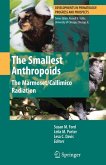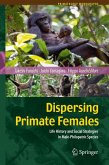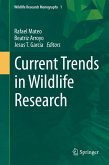The list of challenges facing nonhuman primates in the 21st century is a long one. The expansion of palm oil plantations to feed a growing consumer class is eating away at ape and monkey habitats in Southeast Asia and Central Africa. Lemurs are hunted for food in the poorest parts of Madagascar while monkeys are used as medicine in Brazil. Traditional cultural beliefs are maintaining demand for animal body parts in West African markets while viral YouTube videos of "cute" and "cuddly" lorises have increased their market value as pets and endangered their populations. These and other issues are addressed in this book by leading researchers in the field of ethnoprimatology, the study of human/nonhuman primate interactions that combines traditional primatological methodologies with cultural anthropology in an effort to better understand the nuances of our economic, ritualistic, and ecologic relationships.
Dieser Download kann aus rechtlichen Gründen nur mit Rechnungsadresse in A, B, BG, CY, CZ, D, DK, EW, E, FIN, F, GR, HR, H, IRL, I, LT, L, LR, M, NL, PL, P, R, S, SLO, SK ausgeliefert werden.









